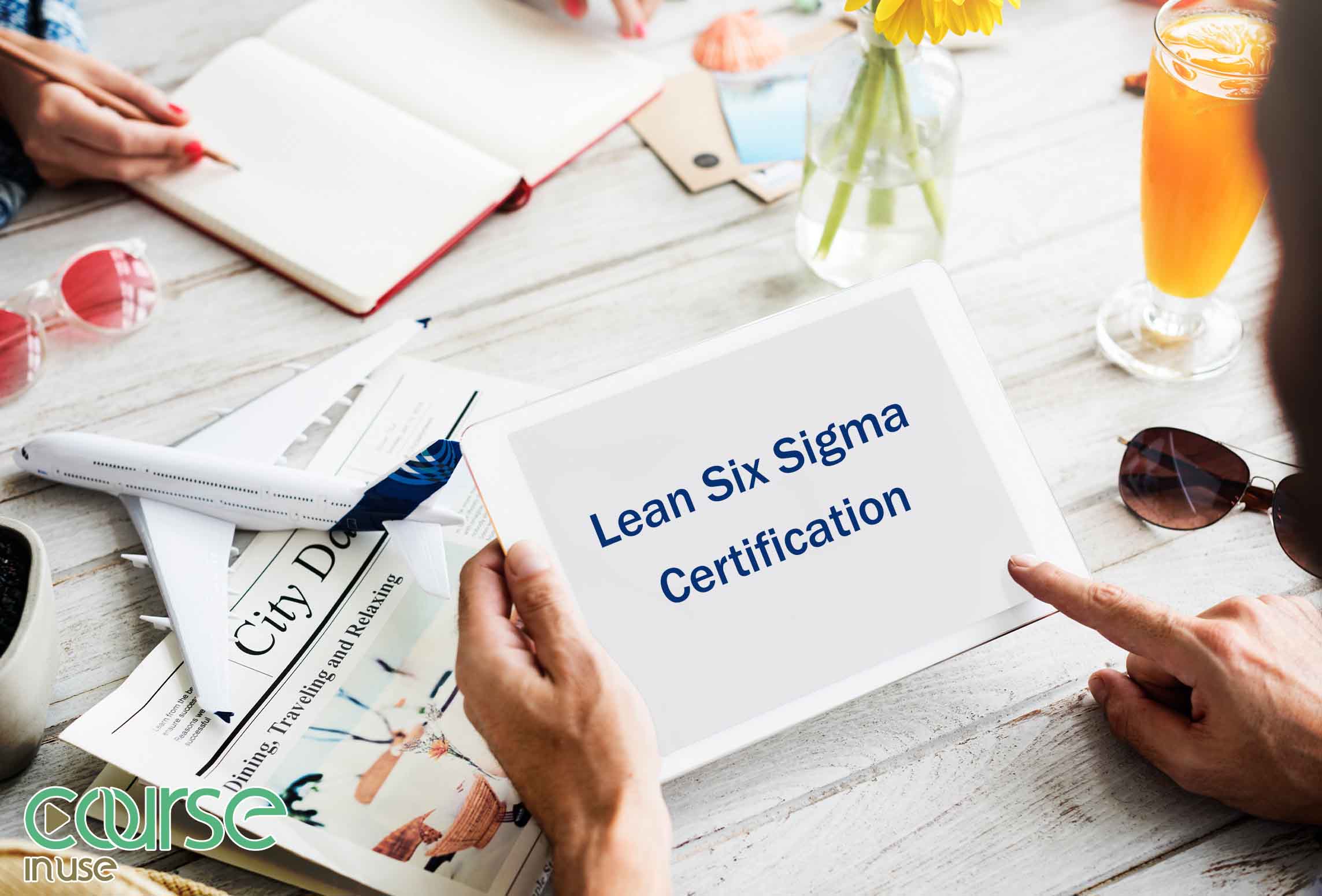Six Sigma and Lean Six Sigma are highly regarded methodologies for quality improvement and efficiency enhancement in organizations. Six Sigma focuses on reducing variability and improving business processes, while Lean Six Sigma emphasizes resource optimization and the elimination of waste. In contrast to management certifications like PMP (Project Management Professional) and CAPM (Certified Associate in Project Management), which center on project management processes, or MBA programs that address broader management and leadership principles, Six Sigma and Lean Six Sigma concentrate on continuous improvement and process efficiency. These approaches are particularly advantageous for organizations aiming to boost product quality and reduce operational costs. By implementing these methodologies, companies can achieve sustainable growth and improved customer satisfaction
What is Lean Six Sigma?

Lean Six Sigma is a team-oriented management methodology that enhances organizational performance by integrating Lean manufacturing principles with Six Sigma strategies. This comprehensive approach aims to reduce waste of resources, time, effort, and talent while maintaining high-quality standards in production and organizational processes. Lean Six Sigma certifications and standards are governed by organizations such as the International Association for Six Sigma Certification (IASSC), which provides globally recognized credentials to ensure consistent application of these methodologies across industries.
In simple terms, Lean Six Sigma teaches that any use of resources that does not add value for the end customer is considered waste and should be eliminated. By focusing on optimizing efficiency and reducing defects, this methodology enables organizations to provide superior value to their customers and effectively meet their needs. Another prominent organization, the American Society for Quality (ASQ), also offers certifications and training to support the implementation of Lean Six Sigma and enhance quality management practices worldwide.
Incorporating Lean Six Sigma practices can lead to significant improvements in process efficiency, increased customer satisfaction, and enhanced overall productivity. Organizations that adopt this approach position themselves for sustainable growth and competitive advantage in the market.
Lean Six Sigma Phases
The DMAIC phases of Lean Six Sigma are utilized to identify and enhance existing process issues with unidentified root causes.
Define
Articulate the issue from the organization’s viewpoint, stakeholder perspective, and customer viewpoint. Determine the quality standards that customers expect and assess the magnitude of the issue.
Measure
Evaluate the current workflow and how it contributes to the issue. Ascertain whether the process can fulfill the quality standards previously established by customers. Align each process step with your quality benchmarks. Support your assessments with actual performance metrics.
Analyze
Review all data collected to this point to clarify the precise nature of the issue, its scope, and its origin.
Improve
Resolve the issue and validate the enhancement. Collaborate to develop a solution that addresses both the issue and its origin. Utilize your data to confirm that the solution aligns with the problem at hand. Test the solution and gather performance metrics to support it.
Control
Supervise enhancements and continue to optimize whenever feasible. Finalize acceptable performance standards. Create a strategy to manage variations that may arise, sustain improvements, and avert a recurrence of the initial problem.
Lean Six Sigma Belt Levels
| Belt Level | Overview | Reports To… |
| White Belt | Understands the fundamental principles and goals of Lean Six Sigma and is familiar with the relevant terminology. | |
| Yellow Belt | Comprehends essential Lean Six Sigma concepts, tools, and techniques; can participate in project teams and receive Just-In-Time (JIT) training. | Green or Black Belts |
| Green Belt | Has a solid understanding of Lean Six Sigma methodologies; capable of initiating and managing Lean Six Sigma projects while providing JIT training to team members; focuses on tool usage and the implementation of DMAIC and lean strategies. | Black Belts |
| Black Belt | Possesses advanced expertise in Lean Six Sigma; acts as a full-time leader of cross-functional project teams and serves as a mentor or coach to Green Belts; responsible for executing Lean Six Sigma initiatives. | Master Black Belts |
| Master Black Belt | Demonstrates extensive expertise in Lean Six Sigma; typically oversees the entire Lean Six Sigma program; functions as a coach or mentor while monitoring projects; partners with organizational leaders to identify efficiency gaps and training needs. | C-suite Executives |
Benefits of Lean Six Sigma

Lean Six Sigma methods are recognized as effective tools for improving efficiency and quality within organizations, offering numerous benefits for employees, customers, suppliers, and the companies themselves.
- Improved Efficiency: Lean Six Sigma streamlines processes and reduces waste, leading to enhanced operational efficiency and faster response times.
- Enhanced Customer Experience: By focusing on quality improvement and eliminating defects, organizations can deliver higher quality products and services, resulting in increased customer satisfaction and loyalty.
- Cost Reduction: These methods help identify and eliminate unnecessary costs, leading to significant savings and better profit margins.
- Increased Revenue: Improved processes and quality can lead to higher sales volumes, as satisfied customers are more likely to become repeat buyers and recommend the company to others.
- Employee Engagement and Development: Involving employees in Lean Six Sigma initiatives fosters a culture of continuous improvement and enhances their skills in areas such as analytical thinking and project management.
- Data-Driven Decision Making: Lean Six Sigma relies on statistical analysis and data collection, enabling organizations to make informed decisions based on evidence rather than intuition.
- Sustainable Improvement: The focus on continuous improvement ensures that the benefits achieved through these initiatives are sustained over time, allowing organizations to adapt to changing market conditions and customer needs.
- Competitive Advantage: Organizations that implement Lean Six Sigma can respond more effectively to market changes and customer demands, giving them a significant edge over their competitors.
By leveraging these benefits, companies can achieve operational excellence and foster a culture of continuous improvement that enhances overall performance.
Why Is Lean Six Sigma Important?
Lean Six Sigma is considered important for several reasons and is recognized as a powerful approach to improving business processes. Here are some key reasons for its value:
1.Measurable Improvements: This methodology provides a systematic approach to achieving measurable and consistent improvements in operational efficiency, quality, and customer satisfaction.
2.Efficiency and Waste Reduction: Lean Six Sigma helps organizations optimize their operations by eliminating waste and reducing inefficiencies. This leads to more efficient workflows and better resource utilization.
3.Quality Improvement: By focusing on reducing variability and defects, Lean Six Sigma enhances the quality of products and services, leading to higher customer satisfaction and fewer errors.
4.Cost Savings: Improvements in efficiency and quality often result in significant cost savings. Organizations can reduce operational costs and increase profitability by optimizing processes.
5.Customer Satisfaction: Lean Six Sigma’s focus on continuous improvement ensures that customer needs are met more effectively, resulting in better customer experiences and loyalty.
6.Data-Driven Decision Making: This methodology relies on data and statistical analysis to identify problems and implement solutions. This ensures that decisions are based on objective information rather than assumptions.
7.Culture of Continuous Improvement: Lean Six Sigma promotes a culture of continuous improvement, encouraging employees at all levels to seek ways to enhance processes and eliminate inefficiencies.
8.Employee Engagement: Involving employees in Lean Six Sigma projects can boost their motivation and morale. They become more invested in their work and contribute to the organization’s success.
9.Competitive Advantage: Organizations that implement Lean Six Sigma can respond more quickly to market changes and customer demands, providing them with a significant competitive edge.
10.Integration of Best Practices: Lean Six Sigma combines the principles of Lean (focused on waste reduction) and Six Sigma (focused on quality improvement), allowing organizations to benefit from both methodologies.
By adopting Lean Six Sigma, organizations can achieve operational excellence, improve overall performance, and attain sustainable success in their industries. Have you considered implementing Lean Six Sigma in your work or studies?
How Much Does Lean Six Sigma Training Cost? (2024 Update)
| Training Type | Certification Level (Belt) | Cost | Duration |
| Self-Study | White Belt | Free (limited time) | – |
| Online Training | White Belt | $99 | – |
| Online Training | Yellow Belt | $125 | – |
| Online Training | Green Belt | $257 | 1 to 7 weeks (self-paced) |
| Online Training | Black Belt | $399 | 1 to 7 weeks (self-paced) |
| Online Training | Master Black Belt | $699 | 1 to 7 weeks (self-paced) |
| In-Person Training | Master Black Belt | $4975 | 8 days (2 weeks) |
| In-Person Training | Lean Fundamentals | $1300-2000 | 3 to 4 days |
| Online Training | Lean Fundamentals | $399-784 | – |
Lean vs Six Sigma differences?
| Aspect | Lean | Six Sigma |
| Primary Focus | Eliminating waste and improving process flow | Reducing defects and process variation |
| Core Objective | Process efficiency, speed, and cost reduction | Quality improvement and defect reduction |
| Methodology | Uses tools like Value Stream Mapping, 5S, Kaizen, and Kanban | Follows the DMAIC (Define, Measure, Analyze, Improve, Control) framework |
| Metrics & Measurements | Lead time, cycle time, inventory levels, process flow | Defects Per Million Opportunities (DPMO), Sigma Level, Process Capability |
| Approach to Problem Solving | Intuitive and qualitative, focusing on visible improvements | Data-driven and quantitative, using statistical tools |
| Tools Used | Value Stream Mapping – 5S – Kaizen – Kanban – Poka-Yoke |
– Control Charts – Pareto Analysis – Fishbone Diagram – Regression Analysis – Hypothesis Testing |
| Time Frame for Improvements | Short-term, focusing on quick wins | Longer-term, involving detailed analysis and testing |
| Philosophical Approach | Believes waste is due to poor process design and excess | Believes defects are due to uncontrolled variability |
| Key Principles | – Continuous improvement (Kaizen)
– Just-In-Time (JIT) – Pull System |
– Reducing variation – Improving process capability – Root Cause Analysis |
| Types of Waste (TIMWOOD) | – Transportation – Inventory – Motion – Waiting – Overproduction – Overprocessing – Defects |
Not applicable |
| Implementation Approach | Often implemented at the grassroots level with employee involvement | Typically involves experts (Green Belts, Black Belts, Master Black Belts) |
| Industry Application | Manufacturing, logistics, and service industries | Healthcare, finance, electronics, and precision industries |
| Key Deliverables | Streamlined processes, shorter cycle times, lower costs | Defect reduction, improved quality, and process control |
| Typical Project Outcomes | Reduction in process time, optimized workflow | Consistent quality, reduced variability, and improved predictability |
| Employee Involvement | High, with a focus on empowering teams | Moderate to high, depending on the project complexity |
| Strengths | – Quick results – Reduced waste – Improved workflow |
– Strong focus on quality
– Data-backed decisions – Long-term consistency |
| Weaknesses | May not address root cause of defects or variability | Can be time-consuming and resource-intensive |
| Philosophical Foundation | Create more value with fewer resources. | Reduce variability to achieve near-perfect quality |
| Integration into Lean Six Sigma | Reduces waste while also ensuring process stability and defect reduction | Minimizes defects and errors while enhancing overall process flow and efficiency |
Conclusion: Why Get a Lean Six Sigma Certification?
A Lean Six Sigma certification is a powerful addition to your professional skillset, opening doors to higher-level positions and increased earning potential. It equips you with the tools to optimize processes, reduce costs, and improve quality in any organization. With this certification, you’ll stand out as a problem solver and a leader in operational excellence.
Why Choose Online Courses at Course in use?
Flexibility: Learn at your own pace, anytime and anywhere.
High-Quality Training: course in use offers top-notch content and expert instructors.
Affordable: Get industry-recognized certification without the high costs of traditional courses.
Support & Resources: Enjoy continuous support and lifetime access to materials.




